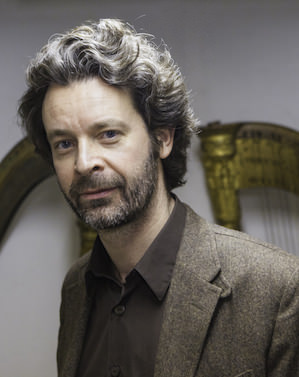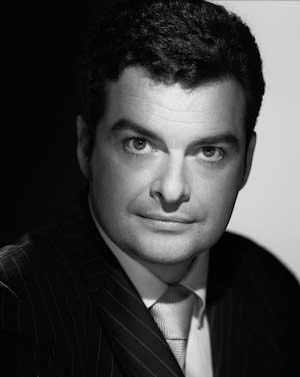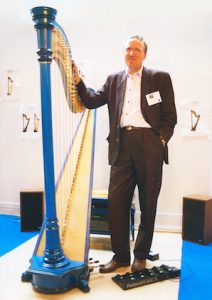Fifty years of passion à la française
Be they musicians, painters, sculptors or dancers, the better an artist’s classical technique, the more fully they can express themselves. It is the same for luthiers, who combine expertise with imagination, to realize dreams. Each Camac harp is a unique link in a long chain of savoir- faire, research and passion.
1972: Camac Society founded
In second half of the twentieth century, Parisian-Breton intelligentsia adopted the harp’s Irish history as part of a Pan-Celtic revival, and a symbol of resistance. The Irish had had to burn their harps when the English invaded, and he who kept his harp did so in peril of his life. The harp was reborn among the Bretons in Paris as a symbol of resistance against the ever-centralizing French state. The lever harp had also been gaining popularity in Brittany itself since the nineteenth century, thanks to visiting harpists from other Celtic lands.
In the 1970s, France experienced a coinciding folk revival, coming from the USA via Great Britain. It became clear that market demand increasingly required domestic mass production, in addition to the work of smaller artisans, and many importers. Part of the Celtic/folk revival was a craze for South American music., and Gérard Garnier decided to begin making American Indian flutes. Their success surpassed all expectations. Gérard therefore suggested to his elder brother Joël that he assist him in taking the commercial hand of the business. During the winter of 1971-72, they founded the Camac Society in a large hangar in Mouzeil, near Nantes in Brittany, where the Camac factory still is today. Camac’s name comes from “Pachacamac”, an important Quechua god. His name means “creator, giver of life”.
November 1972: launch of first Bardic harp
Camac began to expand its production to appeal more widely to the folk music movement. As well as Indian flutes, they made hurdy gurdies, Vosges spinets, Scottish bagpipes, dulcimers, bombardes and Breton bagpipes.
Following the success of Alan Stivell and his “Renaissance of the Lever Harp”, Gérard and Joël Garnier began to interest themselves in this instrument. At first, going into production was out of the question, and they imported lever harps from a Japanese manufacturer, at the time the only manufacturer capable of lever harp production on this scale. In 1972, the first Camac harp model was offered for sale, the “Bardique”: an instrument with a plane-parallel sound box. Alan Stivell used one of these instruments on-stage.
Some years later, Joël Garnier was unforgiving about his first instruments. “The harps were not ugly, but their reliability left much to be desired. Quite honestly, they were mediocre. At what point did I begin to interest myself seriously in the harp and its parameters? I made it my business to meet with as many harpists as possible. Little by little, I discovered the harp, its music, the harpists themselves, and I came genuinely to love them. In addition, the fact that at this time 95% of Celtic harps were Japanese was a challenge I wanted to take up.”
1976: launch of first lever harp
Camac’s first “Celtic” harp appeared in 1976. This instrument was intended to echo what was long called the ‘Irish’ harp: a plywood model with 32 strings, developed with the advisory help of Mariannig Larc’hantec, one of the pioneers of the instrument in Brittany and, like so many, Telenn Bleimor-trained.
After the Morgane, Camac soon added the first Mélusine models to the lever harp range, plus a now-discontinued model called the Brocéliande. Within a few years, Camac had come to occupy more than 95% of the Breton Celtic harp market.
1984: presentation of electric lever harp prototype
The 1970s saw the rise of the folk-rock movement, and amplifying the harp therefore became essential. The group that accompanied Alan Stivell included electric guitars, drums, pipes and the bombarde – none of which are soft instruments. The use of external microphones rapidly proved to be doomed to failure. The amplification could not technically be confined to the harp, and the other instruments around were forcibly also captured. Moreover, even at quite a low volume level, feedback hugely complicated the task of sound engineers.
The idea hence followed of putting a microphone directly in the sound box, which gave a more precise result. The Salvi firm should be acknowledged for their development of the first amplified pedal harp; equally notable is the amplification research carried out by individual harpists, especially Andreas Vollenweider.
After some years, and despite certain advances in electroacoustic harps, feedback and external noises still occurred too often, according to the placing of pick-ups in the harp, or the configuration of speakers on the stage. So Joël Garnier decided to create a harp that didn’t have any sound box at all.
Camac’s “solid-body” harp had neither a sound box nor soundboard, and equipped with a piezoelectric microphone on each string. This type of pickup is very different from a magnetic microphone, and Camac uses it to this day because of its pure, natural and round sound. Joël Garnier and Kristen Noguès presented the “ElectroHarp” at the Edinburgh International Harp Festival, and then the World Harp Congress in Jerusalem. Alan Stivell plays it on “Harpes du Nouvel Age”, and around the same time it was adopted with well-known success by the well-known Scottish harpists Patsy Seddon and Mary MacMaster.
1985: Harpe à memoire
Camac received more and more requests from harpists for pedal harps. Spotting a promising market, Joël Garnier first responded to demand by offering for sale American harps from Chicago, as well as the Russian harps made in St Petersburg. Later, he progressed to manufacturing his own classical harps.
Inspired by existing models, he began by turning his hand to a Tyrolean-style harp, with a single-action pedal mechanism. Very quickly, he powered through the levels, for one of Joël Garnier’s great character traits was always to make technical innovations – drastically, at times – in the construction of his instruments. In 1981, observing that “the manufacture of the concert harp is rather archaic and could certainly be evolved”, he hit upon the idea of a truly revolutionary instrument: a “memory harp” controlled by computer, with a hydraulic mechanism. In a classical harp, the semitones are obtained by means of the seven pedals in the base. What Joël Garnier came up with at this time was nothing less than a system allowing the pedal-changes in a piece to be programmed: “the traditional mechanism is replaced by a fluid one, the pedal discs become hydraulic micro-cylinders, the pedals are replaced by electric switches, and a micro-computer allows harpists to move seven notes in what would have been a single pedal action. And there is a special “improvisation” programme, to set different pedal combinations.”
One can easily imagine the implications of this for a harpist in concert, as well as for the teaching of the instrument. But without doubt Joël Garnier, who still did not really know the harp world, wanted to go too far, too fast. The project was destined for a short life: what Jakez François has described as the “Concorde of the harp” was a Concorde that was never to take flight.
Presented in Jerusalem at the 1985 World Harp Congress, the prototype, its budget run into millions of francs, was a sensation. But after all is said and done, it proved commercially unworkable. If it displayed undeniable technical prowess, it was nevertheless insufficiently reliable, and the cost of its manufacture was exorbitant. The technology on board also made the base of the instrument considerably heavier, harder to transport, and to use. Camac have therefore donated this instrument to the Musée de la Musique in Paris, where it can be found in the “Instruments of the Twentieth Century” section.



